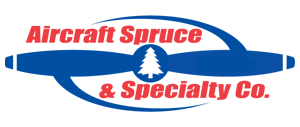FREE SHIPPING ON ORDERS OVER $350 (SOME EXCLUSIONS APPLY) | 877-4-SPRUCE
Mc-130H Combat Talon II Model
$256.95/Each
Part# 13-10507
MFR Model# B6410
MFR Model# B6410
Overview
|
The MC-130H Combat Talon II was operated by the United States Air Force. It was designed in the early 1990s. Its role was to provide infiltration, exfiltration, and re-supply special operations forces and equipment in different territories. They were also used in psychological operations support and helicopter refueling. The Combat Talon I had been operational since the Vietnam War while Combat Talon II became active in 1990. The Combat Talon II was designed to replace Combat Talon I in 1990s following the Gulf War. Its features are stronger compared to the Combat Talon I. With its new technology, such as special radars and night vision capability, the aircraft can fly as low as 250 feet. The Combat Talon II is said to be used for the first time in Liberia to assist the evacuation of two thousand civilians. The MC-130H Combat Talon IIís mission was to help day and night and even in bad weathers as airdrop for equipments, personnel and some special operations such as evacuation missions. In April 1996, the MC-130H Combat Talon II from the 7th Special Operations units in United Kingdom entered the service in Liberia for the Operation Assured Response. This was the first combat operation of the aircraft. Troops from the Royal Air Force rescued more than 2,000 citizens from Monrovia following four days of extreme combating by rival armed forces. Similar conditions took by the Combat Talon II in 1997 in Zaire. In the end of that year, Combat Talon II assignments brought commando troops in Cambodia. In June 10, 1997, the war in the capital of Congo rage where a Combat Talon II aircrew got the Mackay Trophy for an embassy evacuation. The crew saved 30 Americans and 26 foreign nationals. The Air Force used the MC-130H to bring an American military assessment troops and evacuated 56 people from Brazzaville. The 7th Special Operations Squadron placed a European Command survey, assessment squad and vehicles for support. The team was composed of logistics, communications, security and specialists that performed infrastructure evaluations and calculated the need for additional European Command support to the United States Embassy in Brazzaville. Over 900 feet of hoses were placed for refilling of fuels of two helicopters. The plane was in blackout form that is why they were using Night Vision Goggles for them to see. |
WARNING: Cancer and Reproductive Harm - www.P65Warnings.ca.gov. |
Q&A
Please note, Aircraft Spruce's personnel are not certified aircraft mechanics and can only provide general support and ideas, which should not be relied upon or implemented in lieu of consulting an A&P or other qualified technician. Aircraft Spruce assumes no responsibility or liability for any issue or problem which may arise from any repair, modification or other work done from this knowledge base. Any product eligibility information provided here is based on general application guides and we recommend always referring to your specific aircraft parts manual, the parts manufacturer or consulting with a qualified mechanic.








 FREE Shipping
FREE Shipping




